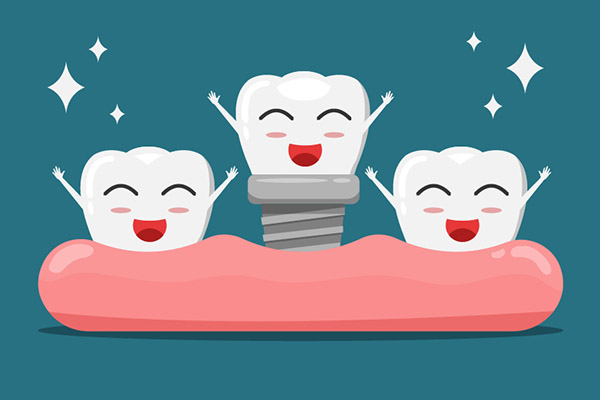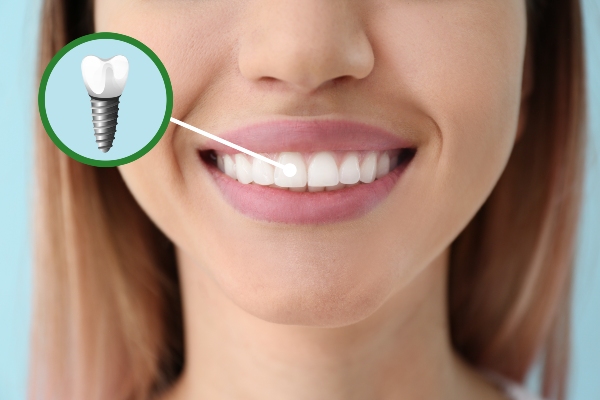 If you have lost multiple teeth, dental implants are one of the options for replacing missing teeth. This article highlights how dental implants work as a tooth replacement. Dental implants are titanium screws that are surgically implanted into the jawbone. They act as prosthetic tooth roots, securing oral restorations that replace missing teeth.
If you have lost multiple teeth, dental implants are one of the options for replacing missing teeth. This article highlights how dental implants work as a tooth replacement. Dental implants are titanium screws that are surgically implanted into the jawbone. They act as prosthetic tooth roots, securing oral restorations that replace missing teeth.
Options for replacing missing teeth: Dental implants
Dental implants are the only tooth restoration option that can restore lost tooth roots, making them the preferred choice by many dentists to replace missing teeth. This is critical because dental roots perform two functions: anchoring the top of a tooth and stimulating the jaw to maintain its density. When a person chooses dental implants to replace lost teeth, the jaw continues to get the stimulation required to stay healthy. This prevents the bone tissue resorption that occurs when teeth are absent, a disease that frequently results in wrinkles and fine lines.
The following are some of the options for replacing missing teeth that can be used with dental implants:
Implant-supported bridges
For individuals with many missing teeth, implants may be coupled with dental bridges to provide a more permanent option. When a patient has a few missing teeth close together, the dentist may suggest this alternative.
The dentist will place two implants on each end of the space left by the lost teeth. Crowns are added to the implants' external-facing end after they have completely bonded with the jawbone. These crowns function as the bridge's abutments. The dentist will create a custom oral prosthesis by taking an imprint of the patient's teeth.
To ensure that the final result appears natural, the dentist will match the prosthesis's color, size, and form to the patient's natural teeth. Unlike with traditional bridges, there is no need to file down healthy teeth for the process.
Implant-supported dentures
This treatment is usually suggested for those who are missing most of their natural teeth. Implant-supported dentures offer the strength and stability of implants with the cost-effectiveness of dentures. Four to six implants are placed along the patient's jaw, and dentures are connected to the implants after osseointegration.
There are detachable implant-supported dentures similar to conventional dentures but more stable and permanent alternatives, which remain in place once implanted. The dentist will offer a suggestion based on the patient's condition. With implant dentures, patients can consume regular meals, speak and smile confidently in public without fearing that their dentures will slip out.
Single dental crowns
The cost of getting multiple single implant crowns can add up quickly, so dentists seldom use them to replace multiple missing teeth, although there are times when it would be advisable. A patient with two missing teeth should have single implants for both since each option would need at least two implants. The dentist will only need to place an implant and fabricate a dental crown to finalize the restoration process.
In conclusion
There are several options for replacing missing teeth. Book an appointment with our dental office to discuss the right one for your situation.
Request an appointment or call Lalangas Family Dentistry at 972-534-6008 for an appointment in our Dallas office.
Related Posts
Dental bridges are one of the most preferred options for replacing missing teeth. As the name suggests, dental bridges bridge the gaps left by one or more lost teeth. This is a guide to your dental bridge options, types, and benefits.A dental bridge is a prosthetic bridge that replaces one or more missing teeth. It…
Participating in sports is a fun and healthy hobby, but it can lead patients to search for options for replacing missing teeth. Unfortunately, losing teeth due to a sports injury is common, especially in contact sports. Fortunately, there are solutions for restoring your smile.A single tooth replacement (crown), fixed partial or complete denture, or maxillofacial…
The bridge is a dental repair that is cemented in place and is used to replace missing teeth. It is done by attaching an artificial tooth definitively to an adjacent tooth, be it natural or artificial. In most cases, crowns are artificial teeth paired with bridges. They are usually made from porcelain or blended resin.…


